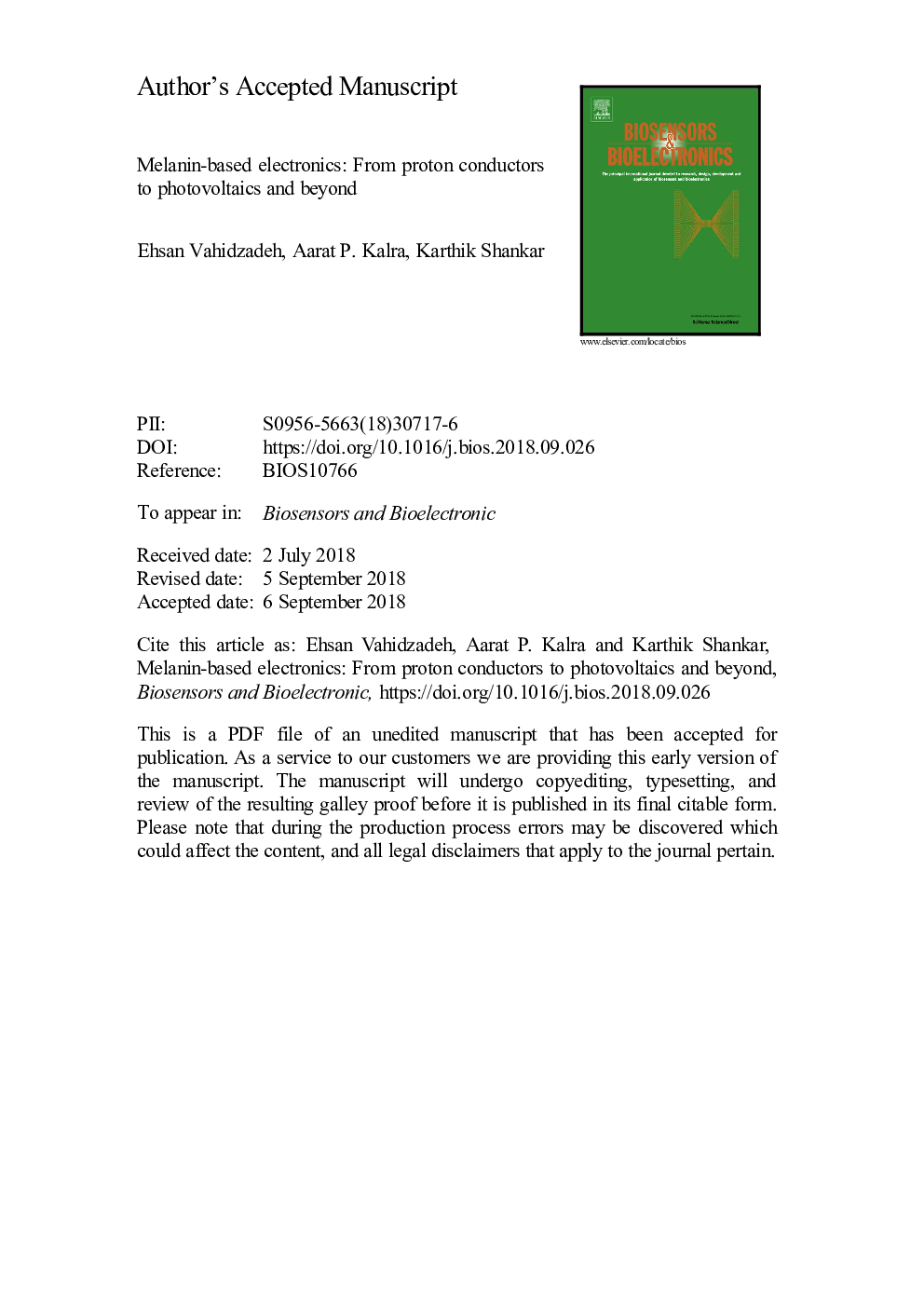| Article ID | Journal | Published Year | Pages | File Type |
|---|---|---|---|---|
| 11027668 | Biosensors and Bioelectronics | 2018 | 37 Pages |
Abstract
The successful interfacing of electronics with biology is the next frontier for microelectronics and nanotechnology. Melanin, a naturally occurring conjugated polymer composed of different structural subunits, may be an ideal candidate for such interfacing. In the solid-state, the large broadband molar attenuation coefficient of melanin over the visible spectrum implicates potential applications as a semiconductor for light harvesting and light detection. Additionally, the conductance of melanin has been shown to increase with hydration, making this irregular polymer a hybrid electronic-protonic conductor. While the precise mechanism of charge transfer in melanin is not well understood, the hydration dependence of conductance has been tapped to utilize melanin-based devices in a variety of roles, such as humidity sensors and pH detectors. The applications of melanin active layers in OLEDs, OPVs and OFETs have been explored. The viability of this polymer has also been validated inside biological systems, showing the potential for creating electronic devices that are biocompatible. This paper reviews the status of melanin towards achieving biocompatible electronics.
Related Topics
Physical Sciences and Engineering
Chemistry
Analytical Chemistry
Authors
Ehsan Vahidzadeh, Aarat P. Kalra, Karthik Shankar,
